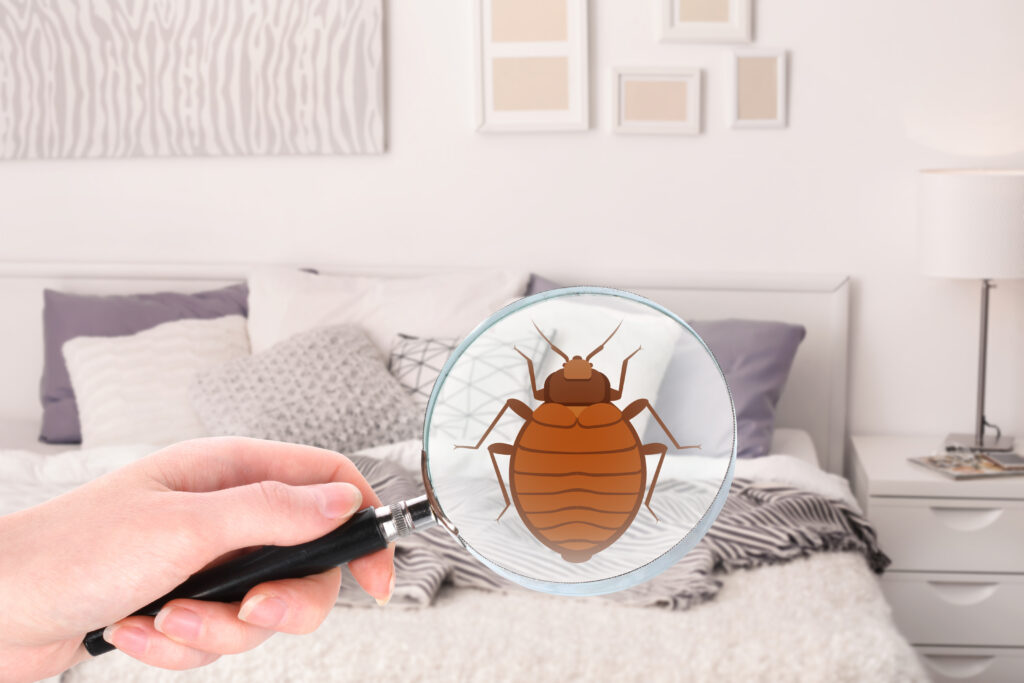The Science of Bug Control: Understanding the Biology of Common Household Vermin
In the world of bug control, a profound understanding of the biological details of typical household parasites works as the foundation of effective management techniques. By diving into the nuanced life cycles, habits patterns, and recreation methods of these undesirable intruders, we discover a wide range of knowledge that can considerably influence our capability to control their populaces. From the meticulous routines of tiny pests to the complex breeding routines of larger parasites, the understandings acquired from examining their biology provide a critical structure for creating targeted and lasting remedies. Join us as we unwind the scientific underpinnings of bug control and explore the remarkable world that exists within our homes (philly pest control in philadelphia bed bugs).
Value of Bug Biology
The understanding of parasite biology is crucial for reliable parasite control methods in residential setups. By diving right into the biology of common home bugs, individuals can acquire useful insights right into their behavior, life cycles, and environments. This knowledge is necessary for establishing targeted and lasting insect management comes close to that reduce the usage of damaging chemicals and decrease ecological influence.
Pest biology includes numerous factors that affect parasite invasions, including reproductive prices, chosen food resources, and survival devices. For example, recognizing the reproducing patterns of bugs such as insects or roaches can assist homeowners implement safety nets to disrupt their life process and lower populations. Similarly, knowing the foraging actions of rats or ants can assist in situating and removing their accessibility indicate food sources within a family.

Life Cycles of Common Bugs
Understanding the life cycles of typical pests is vital for executing reliable pest control procedures in household atmospheres. The life process of a bug refers to the phases it goes via from birth to adulthood and includes egg, larva, pupa, and grown-up phases. Recognizing these stages aids in determining one of the most at risk factors in the pest's life process for targeted control approaches.
For circumstances, typical house bugs like cockroaches have an insufficient metamorphosis, progressing from egg to fairy to grownup. In contrast, pests like insects go through a complete metamorphosis with egg, larva, pupa, and grown-up stages.
Behavior Patterns of Home Pest
An in-depth evaluation of home bugs exposes elaborate behavior patterns that play a crucial duty in recognizing parasite control methods. Home pests display different actions patterns that add to their survival and capability to prosper in human environments. Understanding these patterns is crucial for effective insect monitoring.
One common behavior amongst home bugs is their tourist attraction to food resources. Pests such as ants, cockroaches, and cupboard insects are drawn to food residues, spills, and crumbs. By determining and getting rid of these food sources, house owners can interfere with the pests' foraging patterns and lower problems.

Additionally, several family pests exhibit social actions, residing in colonies or groups. Understanding the social dynamics of pests like ants or termites is crucial for successfully removing entire swarms as opposed to just private bugs. By understanding the habits patterns of family pests, bug control specialists can develop targeted and effective approaches to manage infestations efficiently.
Reproduction Methods in Insects
Reproduction in insects involves detailed biological mechanisms that drive populace growth and problem rates. Insects have actually progressed various methods to make sure the extension of their types and the successful colonization of brand-new settings. One common method is fast reproduction, where pests have brief pregnancy periods and produce multitudes of spawn. exterminator philadelphia bed bugs philly This method permits them to swiftly establish prospering populaces in beneficial problems. In addition, some pests show complex breeding habits, such as pheromone interaction and courtship rituals, to guarantee effective reproduction.
An additional crucial aspect of pest reproduction is the advancement of resistance to regulate measures. Pests can adjust to chemicals and various other removal methods through mechanisms like behavior adjustments and hereditary anomalies. This capacity to develop rapidly positions a significant obstacle for parasite control efforts, needing consistent innovation in administration approaches.

Influence of Biology on Pest Control
The organic qualities of parasites play a vital role fit the effectiveness of bug control approaches. Recognizing the biology of common household parasites is essential for creating successful parasite administration approaches (exterminator philadelphia bed bugs philly). Aspects such as the life expectancy of an insect, its reproductive price, chosen habitats, and feeding actions all influence the choice of control steps
For instance, parasites with rapid reproductive rates, such as roaches or certain species of ants, may call for more sustained and hostile control efforts to stop population spikes. Likewise, bugs that have established resistance to particular chemicals will certainly necessitate the use of alternate control techniques to efficiently manage problems.
In addition, the biology of pests likewise affects the timing and regularity of control applications. Some insects are a lot more active during certain times of the year or under particular ecological conditions, requiring targeted interventions during these durations to accomplish optimum results.
Conclusion
Finally, understanding the biology of usual household pests is important in reliable insect control. By recognizing their life cycles, habits patterns, and recreation strategies, we can establish targeted and reliable methods to take care of and eliminate these parasites. By considering the biological facets of insects, we can apply much more lasting and lasting solutions that decrease the effect of pests on our environments and homes.
In the realm of parasite control, a profound understanding of the organic intricacies of typical household insects offers as the keystone of effective monitoring strategies.The understanding of bug biology is crucial for efficient bug control methods in household settings.Understanding the life cycles of common insects is crucial for implementing effective bug control actions in residential settings.The organic features of parasites play a critical function in shaping the performance of pest control techniques.In verdict, understanding the biology of usual family insects is essential in efficient pest control.